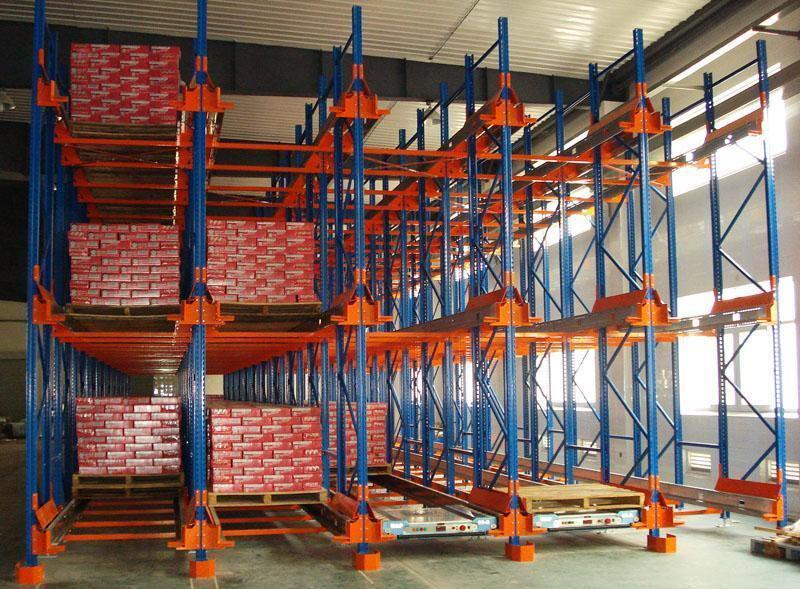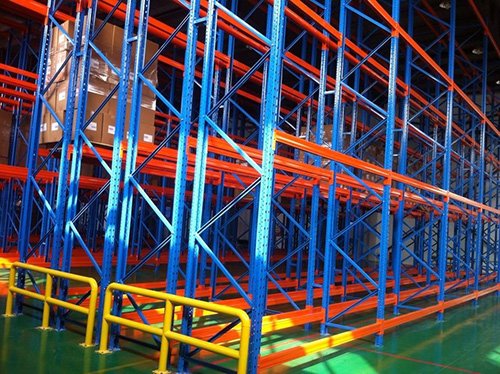In the relentless pursuit of warehouse and industrial storage optimization, longspan shelving stands as a cornerstone solution. Renowned for its exceptional versatility, strength, and adaptability, longspan shelving systems are engineered to handle the demanding storage needs of modern businesses. If you're looking to streamline operations, boost storage density, and improve accessibility, understanding longspan shelving is paramount. This comprehensive guide dives deep into what makes longspan shelving an indispensable asset, exploring its key features, benefits, and critical considerations.

What is Longspan Shelving?
Longspan shelving, sometimes referred to as long span shelving, is a robust, adjustable industrial shelving system characterized by its ability to support significant loads over extended shelf lengths. Unlike lighter-duty shelving, longspan shelving utilizes heavy-duty upright frames and specially designed beams that span considerable distances – typically 6 feet (1.8m), 8 feet (2.4m), 10 feet (3m), or even 12 feet (3.6m) – without requiring intermediate vertical supports. This long-span capability creates vast, unobstructed storage bays ideal for palletized goods, bulky items, and diverse inventory.
Constructed primarily from high-tensile steel, longspan shelving components are often hot-dip galvanized or finished with durable powder coating to resist corrosion in demanding warehouse environments. The hallmark of longspan shelving is its modularity: upright frames, beams, and decking (wire mesh, particle board, or steel panels) can be reconfigured as storage needs evolve.
Key Advantages of Longspan Shelving Systems
Why has longspan shelving become the go-to choice for countless warehouses, distribution centers, manufacturing plants, and retail backrooms? Its compelling advantages provide the answer:
Exceptional Strength & Load Capacity: Engineered for heavy-duty applications, longspan shelving boasts superior weight-bearing capabilities. Individual shelf levels can typically support loads ranging from 1,000 lbs (450 kg) to over 10,000 lbs (4,500 kg) or more, depending on the beam length, gauge, and decking used. This makes it perfect for storing pallets, industrial parts, machinery, appliances, and bulky materials.
Maximized Storage Space & Density: The long spans eliminate the need for frequent uprights, creating wide-open storage bays. This maximizes usable cubic space within your facility. You can store more pallets or large items in a given footprint compared to systems requiring more frequent vertical supports. Efficient use of vertical space through multiple levels further enhances storage density.
Superior Flexibility & Adaptability: Longspan shelving is inherently modular. Shelf heights can be easily adjusted in incremental increments (usually 1.5" or 2") along the upright frames to accommodate items of vastly different sizes. Beams and decking can be reconfigured, and entire bays can be extended or relocated as inventory profiles or operational layouts change. This future-proofs your storage investment.
Enhanced Accessibility & Visibility: The open design of longspan shelving, particularly when using wire mesh decking, allows for excellent visibility of stored goods from multiple angles. Forklifts, pallet jacks, and order pickers can easily access pallets or bins stored on lower and middle levels. This improves picking accuracy, speeds up order fulfillment, and simplifies stock checks.
Durability & Long-Term Value: Built from high-quality steel with robust protective finishes, longspan shelving is designed to withstand the rigors of industrial use – impacts, abrasion, and environmental factors. Its heavy-duty construction ensures a long operational lifespan, providing exceptional return on investment (ROI) over many years with minimal maintenance required.
Core Components of a Longspan Shelving System
Understanding the building blocks of longspan shelving is key to specifying the right system:
Upright Frames: These are the vertical columns that form the backbone of the system. They feature punched slots or holes at regular intervals for beam connection. Uprights come in various heights, depths (front-to-back dimension), and steel gauges (thicknesses – lower gauge number means thicker, stronger steel). Common depths are 42", 48", 54", 60", and 72". Base plates provide stability.
Beams: Horizontal members that slot into the upright frames, creating the support structure for the shelf decking. Longspan shelving beams are specifically engineered to handle heavy loads over long distances without sagging. They are typically roll-formed or structural, with options like step-beams or box beams. Load capacity is critically dependent on beam length and type.
Shelf Decking: The surface that rests directly on the beams and supports the stored goods. Options include:
Wire Mesh Decking: Offers excellent ventilation, visibility, and debris fall-through. Ideal for most general warehouse applications.
Particle Board (Plywood) Decking: Provides a solid, flat surface suitable for smaller items or cartons. Requires replacement over time.
Steel Panel Decking: The most durable option, offering maximum strength and a solid surface, often used for very heavy loads or small parts storage.
Braces & Accessories: Diagonal braces (lacing) connect uprights in a bay, providing crucial lateral stability and rack integrity. Other accessories include row spacers (for back-to-back configurations), column protectors (guard rails), end frames, pallet supports, and safety pins.

Diverse Applications for Longspan Shelving
The versatility of longspan shelving makes it suitable for an incredibly wide range of industries and storage scenarios:
Warehousing & Distribution Centers: The primary domain. Perfect for bulk storage of palletized goods, slower-moving SKUs, reserve storage, and large items.
Manufacturing & Industrial Plants: Storing raw materials, work-in-progress (WIP), finished goods, machinery parts, tools, and supplies. Handles heavy industrial components effortlessly.
Retail Backrooms & Bulk Stores: Storing excess inventory, seasonal items, large appliances, furniture, and bulk products received on pallets.
Automotive & Aerospace: Storing tires, body panels, engines, transmissions, and large aircraft parts. Handles the weight and size demands.
Archives & Records Management: Can be configured with solid decking for storing boxes of files, though lighter-duty options might suffice for pure document storage.
Cold Storage & Freezer Warehouses: Galvanized or specially coated longspan shelving systems are ideal for harsh, low-temperature environments, providing robust storage for frozen goods.
Libraries & Media Storage: Adaptable for large media collections or equipment storage.
MRO (Maintenance, Repair, & Operations) Stores: Organizing spare parts, tools, and supplies efficiently.
Critical Considerations When Choosing Longspan Shelving
Selecting the right longspan shelving system requires careful planning. Key factors include:
Load Requirements: This is paramount. Precisely determine the maximum weight per shelf level and the uniformly distributed load (UDL) per beam. Consider both current and potential future needs. Never exceed the manufacturer's rated capacity for beams and uprights.
Item Dimensions & Weight Distribution: What are you storing? (Pallets? Drums? Boxes? Machinery?) Know the dimensions (length, width, height, weight) of your largest and heaviest items. Ensure weight is distributed evenly across the beams and decking. Consider point loads if storing heavy, small-footprint items.
Available Space & Layout: Accurately measure your floor space, ceiling height, and consider clearances for equipment (forklifts, sprinklers, lighting). Plan the layout: single rows, back-to-back rows (using row spacers), or multiple rows with aisles. Determine the optimal beam length (span) and bay depth to maximize space utilization.
Beam Length & Capacity: Longer spans (e.g., 10ft, 12ft) offer greater openness but have lower weight capacities than shorter spans (e.g., 6ft, 8ft) using the same beam profile. Choose the longest span that safely supports your required load. Consult manufacturer load tables meticulously.
Decking Selection: Choose based on the items stored and environment. Wire mesh for visibility/ventilation, particle board for a solid surface on a budget (expect replacement), steel panels for maximum durability and heavy small-item loads.
Environmental Conditions: Consider temperature (freezer?), humidity, potential chemical exposure, or washdown requirements. Specify appropriate finishes (e.g., galvanized for high corrosion resistance).
Safety & Compliance: Longspan shelving must be installed perfectly level and plumb. Ensure it's securely anchored to the floor according to manufacturer specifications and local codes. Use all required braces and safety pins. Consider column protectors in high-traffic areas. Look for systems designed and tested to relevant standards (e.g., RMI in North America). Load capacity signs are essential. Regular inspections are mandatory.
Supplier & Installation: Choose a reputable supplier with engineering support. Professional installation is highly recommended for safety, stability, and ensuring the system performs as rated. DIY installation carries significant risks if not done exactly correctly.
Installation & Maintenance Best Practices
Proper installation and ongoing care are vital for the safety and longevity of your longspan shelving investment:
Professional Installation: Always recommended. Experienced installers ensure frames are perfectly plumb, beams are securely locked, decks are properly seated, and the entire system is anchored correctly to the floor.
Level Floor: Imperative. Shelving cannot compensate for uneven floors; shimming baseplates correctly is crucial during installation.
Regular Inspections: Conduct thorough visual inspections regularly (e.g., monthly or quarterly) and formal documented inspections at least annually. Look for:
Damage to uprights (dents, bends, cracks, corrosion)
Bent, twisted, or disconnected beams
Damaged, sagging, or missing decking
Loose or missing anchor bolts
Loose, missing, or damaged braces and safety pins
Overloaded shelves or uneven weight distribution
Impact damage from material handling equipment
Immediate Repairs: Any damage or issues identified during inspections must be addressed immediately. Damaged components should be replaced with manufacturer-approved parts. Do not operate a damaged rack.
Employee Training: Ensure all staff, especially forklift operators, are trained on safe practices around longspan shelving, including proper loading/unloading, awareness of load capacities, and avoiding impacts.
Load Management: Strictly enforce adherence to posted load capacities. Use pallet supports if only partially spanning a bay. Distribute weight evenly.
Longspan Shelving vs. Other Storage Solutions
Understanding how longspan shelving compares to alternatives helps justify its selection:
vs. Boltless Rivet Shelving: Boltless is lighter-duty, with shorter spans (typically max 4-5 ft), lower capacities, and less overall strength. Ideal for lighter, smaller items. Longspan shelving handles heavier loads and larger items far more effectively.
vs. Pallet Racking (Selective): Selective pallet racking is optimized specifically for storing pallets, typically one pallet deep per face. Longspan shelving offers more flexibility for storing non-palletized items, mixed loads, or pallets in a more open configuration. Pallet racking usually has higher per-pallet-position capacities but less versatility for smaller items.
vs. Cantilever Racking: Cantilever is designed for long, bulky items (lumber, pipes, furniture). Longspan shelving is better suited for boxed, palletized, or uniformly shaped items stored on flat shelves.
vs. Mezzanines: Mezzanines create elevated floor space. Longspan shelving can often be installed under mezzanines or used on the mezzanine deck itself to maximize vertical storage within that new level. They serve complementary purposes.
Investing in Efficiency and Strength
Longspan shelving is more than just metal and decking; it's a strategic investment in operational efficiency, space optimization, and inventory control. Its unparalleled combination of heavy-duty strength, long-span flexibility, modular adaptability, and excellent visibility makes it an essential solution for businesses dealing with diverse, bulky, or palletized inventory across countless industries.
By carefully assessing your specific load requirements, space constraints, and operational needs, and by partnering with a reputable supplier for proper specification and installation, a longspan shelving system will deliver years of reliable, safe, and efficient service. Remember, prioritizing safety through correct loading, regular inspections, and immediate maintenance is non-negotiable. Implement longspan shelving strategically, and unlock the full potential of your warehouse or industrial storage space.







